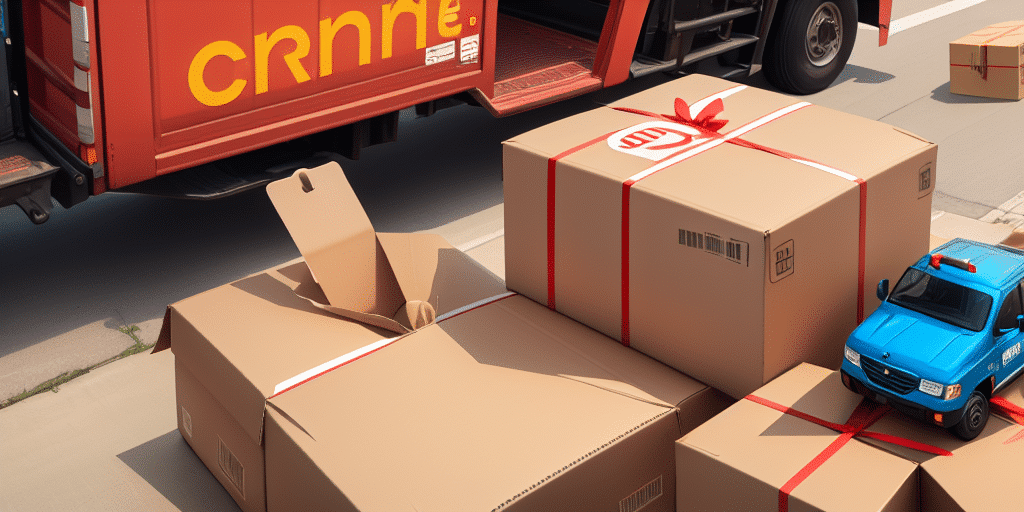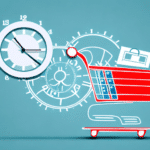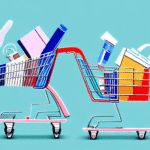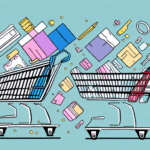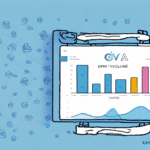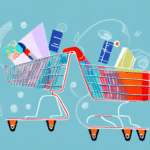Importance of Delivery Speed in Ecommerce
In the highly competitive eCommerce landscape, delivery speed is a critical factor that can significantly influence a customer's purchasing decision. Shoppers expect their orders to arrive swiftly, and any delays can lead to frustration, increased cart abandonment rates, and customer churn. According to a Statista report, 43% of consumers are willing to pay extra for same-day delivery, underscoring the importance of rapid fulfillment in enhancing customer satisfaction.
Fast delivery not only meets customer expectations but also fosters loyalty. When customers receive their orders promptly, their trust in the retailer increases, making them more likely to return for future purchases. Conversely, unreliable or slow delivery can damage a brand’s reputation, leading to negative reviews and diminished customer trust.
Moreover, offering expedited shipping options can differentiate a business from its competitors. In a crowded marketplace, the ability to provide same-day or next-day delivery can be a decisive factor for consumers choosing between similar products from different retailers.
Impact of Delivery on Customer Satisfaction
Customer satisfaction is paramount in driving repeat business and fostering brand loyalty in eCommerce. The delivery experience plays a pivotal role in shaping overall satisfaction. Efficient and reliable delivery that meets or exceeds expectations can turn a one-time buyer into a loyal customer.
Transparency and communication throughout the delivery process are equally important. Providing real-time tracking information, timely updates on delivery status, and proactive communication about any delays can significantly enhance the customer experience. According to a PwC report on customer experience, 73% of consumers cite customer service as a key factor in their purchasing decisions, highlighting the need for clear and consistent communication.
Additionally, offering flexible delivery options, such as scheduled deliveries or pickup points, can cater to diverse customer needs and preferences, further boosting satisfaction and loyalty.
Setting Competitive Delivery Promises
Establishing a competitive delivery promise begins with understanding your target audience's expectations and needs. Factors such as product type, shipping location, and logistics capabilities must be considered to set realistic and achievable delivery timelines.
Clear and proactive communication of delivery promises is essential. Utilize multiple channels, including email, SMS, and social media, to inform customers about their delivery options and timelines. Implementing options like same-day or next-day delivery can serve as a strong selling point, attracting customers who prioritize speed.
Assessing Competitor Delivery Strategies
Researching and analyzing competitors' delivery promises can provide valuable insights. Ensure that your delivery timelines are competitive and offer added value, such as free shipping thresholds or loyalty rewards for frequent customers.
Incorporating Free or Discounted Shipping
Offering free shipping or discounted rates can be an effective way to entice customers. For instance, Amazon Prime has successfully leveraged free two-day shipping to build a loyal customer base.
Logistics and Supply Chain Optimization
Effective logistics are fundamental to fulfilling delivery promises consistently. Partnering with reliable logistics providers ensures that the entire delivery process, from warehousing to transportation and final delivery, is handled efficiently.
Inventory Management
Proper inventory management is crucial to avoid stockouts and delays. Implementing systems that accurately track inventory levels, forecast demand, and manage stock replenishment can streamline operations and enhance delivery reliability.
Embracing Technology for Supply Chain Efficiency
Utilizing advanced technologies such as automation, artificial intelligence, and predictive analytics can optimize supply chain processes. These technologies help in identifying and eliminating bottlenecks, reducing lead times, and improving overall operational efficiency.
Implementing a just-in-time (JIT) inventory system, for example, can minimize excess inventory, reduce costs, and ensure that products are available precisely when needed, thereby accelerating delivery times.
Outsourcing Delivery Services: Pros and Cons
Outsourcing delivery services can offer several advantages for eCommerce businesses, including cost savings, scalability, and access to advanced logistics technologies. By leveraging third-party delivery providers, businesses can focus on their core competencies while ensuring efficient order fulfillment.
Advantages of Outsourcing
- Economies of Scale: Partnering with established delivery providers can reduce shipping costs through bulk pricing.
- Flexibility: Outsourcing allows businesses to scale their delivery operations based on demand fluctuations.
- Access to Technology: Third-party providers often utilize state-of-the-art tracking and logistics systems, enhancing delivery efficiency.
Potential Challenges
- Reduced Control: Relying on external providers can limit a business’s control over the delivery process, potentially affecting service quality.
- Brand Reputation Risks: Poor performance by a delivery partner can negatively impact the brand’s reputation.
- Cost Considerations: For small businesses with low shipping volumes, outsourcing may not always be cost-effective.
Carefully evaluating the pros and cons is essential before deciding to outsource delivery services. Ensuring strong communication and clear performance metrics can help mitigate some of the potential drawbacks.
Marketing and Communication Strategies for Delivery Promises
Your delivery promise can be a powerful marketing tool to attract and retain customers. Effectively highlighting your delivery options across various marketing channels reinforces your commitment to customer satisfaction.
Prominent Display on Website
Ensure that delivery promises, such as free shipping thresholds or expedited delivery options, are clearly visible on your website’s homepage and product pages. This transparency can influence purchasing decisions positively.
Leveraging Social Media and Email Campaigns
Promote your delivery services through social media platforms and email marketing to reach a wider audience. Highlighting fast and reliable delivery can enhance your brand’s appeal.
Incentivizing Delivery Performance
Consider offering rewards and incentives for meeting or exceeding delivery expectations. Examples include discounts on future purchases, loyalty points, or exclusive offers for customers who frequently use expedited delivery options.
Handling Delivery Issues and Maintaining Customer Loyalty
Despite best efforts, delivery delays and issues can occur. How these situations are managed plays a crucial role in maintaining customer trust and loyalty.
Transparent Communication
Proactively inform customers about any delays or issues with their orders. Transparency helps in managing customer expectations and reduces frustration.
Offering Solutions and Compensation
Provide viable solutions to mitigate the inconvenience caused by delivery delays. This can include options like expedited reshipping, discounts on future orders, or partial refunds.
Turning Negative Experiences into Positive Outcomes
Addressing delivery problems effectively can turn a dissatisfied customer into a loyal advocate. Offering exceptional customer service during such times can enhance overall brand perception.
Building Customer Loyalty Through Competitive Delivery Promises
A competitive delivery promise is instrumental in fostering customer loyalty and retention. Consistently meeting or exceeding delivery expectations builds trust and encourages repeat business.
Establishing Trust and Reliability
Reliable delivery services demonstrate a brand’s commitment to customer satisfaction, reinforcing trust and encouraging long-term loyalty.
Differentiating from Competitors
A robust delivery promise can set a business apart in a crowded market. Unique delivery options, such as eco-friendly shipping or personalized delivery experiences, can further enhance differentiation.
According to a Forbes article, delivery speed and reliability are among the top factors influencing customer loyalty in eCommerce, highlighting the significance of a strong delivery strategy.
Case Studies: Successful Ecommerce Companies with Competitive Delivery Promises
Examining successful eCommerce companies provides valuable insights into effective delivery strategies. These case studies demonstrate how a competitive delivery promise can drive growth and customer satisfaction.
Amazon Prime
Amazon’s Prime program offers members benefits like free two-day shipping, exclusive deals, and access to streaming services. This comprehensive delivery promise has been a key factor in Amazon’s market dominance and high customer retention rates.
ASOS
ASOS provides free two-day shipping and free returns on all orders, enhancing the overall shopping experience. This approach has positioned ASOS as a leader in the fashion eCommerce sector, attracting a loyal customer base.
Warby Parker
Warby Parker offers free shipping and returns, along with a “Home Try-On” program that allows customers to try products before purchasing. This customer-centric delivery approach has contributed to their strong brand loyalty and growth.
By studying these companies, eCommerce businesses can adopt best practices and develop delivery strategies that align with their unique market needs.
Future Trends in Ecommerce Delivery Services
The eCommerce delivery landscape is rapidly evolving, driven by technological advancements and changing consumer expectations. Staying abreast of future trends is essential for businesses aiming to maintain a competitive edge.
Emerging Delivery Technologies
Innovations such as drones, autonomous vehicles, and delivery robots are set to revolutionize the delivery process. These technologies promise faster and more efficient deliveries, reducing costs and improving customer satisfaction.
Sustainable Delivery Practices
There is a growing emphasis on sustainable delivery methods to minimize environmental impact. Initiatives like electric delivery vehicles, eco-friendly packaging, and optimized delivery routes are becoming increasingly important.
Personalized Delivery Experiences
Customization of delivery options based on individual customer preferences is expected to rise. Offering tailored delivery windows, personalized packaging, and unique delivery experiences can enhance customer satisfaction and loyalty.
Embracing these trends will enable eCommerce businesses to meet evolving customer demands and drive sustained growth in the future.
Conclusion
A competitive delivery promise is a cornerstone of eCommerce success and growth. By prioritizing delivery speed, optimizing logistics, and leveraging delivery as a marketing tool, businesses can enhance customer satisfaction, build loyalty, and distinguish themselves from competitors. Staying informed about emerging trends and continuously refining delivery strategies will ensure sustained growth and a strong market presence.















